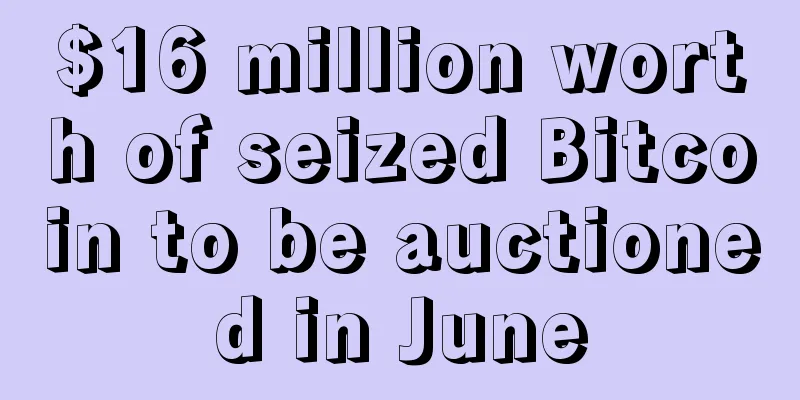Bank for International Settlements: Both central bank digital currencies and virtual currencies may have an impact on the financial system

|
Hu Tianjiao, a reporter of 21st Century Business Herald, reported that the development of digital currencies, stablecoins, cryptocurrencies and other private forms of currencies supported by central banks is in full swing. Any progress made by either side will trigger the attention and reaction of the other side. On September 30, local time, the Bank for International Settlements (BIS) and seven central banks jointly released the latest report "Central Bank Digital Currencies: Financial Stability Implications", stating that private forms of currency (such as stablecoins, cryptocurrencies, etc.) can coexist with central bank digital currencies (CBDCs). Central bank digital currencies will rely on banks and other financial institutions as intermediaries to create credit and help maintain financial stability. Even though the report is full of expectations for the prospects of central bank digital currency, it also emphasizes that it and stablecoins may pose greater challenges to certain business models or parts of banks, and at the same time trigger some changes in the functions of the financial system. "Due to the lack of restrictions on individual holdings, central bank digital currencies may lead to higher volatility in deposits and/or a significant and long-term reduction in customer deposits, which in some cases will affect banks' profitability, lending and overall financial services." However, the report also believes that unlike private forms of currency such as stablecoins, the potential risks posed by central bank digital currencies are more controllable. The report also pointed out that in an era of zero or negative interest rates, the decision on whether and how to accrue interest on digital currencies will become more complicated. "In addition, any significant loss of customer deposit funds will require banks to consider taking a variety of regulatory, risk control and other measures." Similar risksThe report points out that central bank policymakers need to consider a situation where central bank digital currencies are likely to coexist with private forms of money in the future financial system. "This may be very different from today. The development of stablecoins has just begun, and it needs to convince regulators that they are safe, but on this basis, data-driven business models and strong network effects may mean that stablecoins will have important uses in the future." In the view of the BIS, unlike central banks, stablecoin issuers are not bound by principles, do not need to design products that coexist and interoperate with other forms of currency, and do not need to continuously improve innovation and efficiency. This may lead to the fragmentation of the payment ecosystem, just like any other closed-loop payment system. At the same time, the widespread adoption and potential fragmentation of stablecoins may also lead to excessive market dominance. However, the report also acknowledges that, similar to other forms of crypto/digital currencies such as stablecoins, central bank-backed digital currencies also pose risks to the financial system, including banks. "In any new stable state, official and private forms of money may reduce the bank's deposit base," the report said. If banks choose to cut lending to repair their liquidity conditions, deposits elsewhere in the banking system will be affected, and liquidity problems will spread to another bank. Therefore, in general, banks must choose other sources of financing, such as issuing long-term bonds, which will increase the former's financing costs and may also make loan interest rates more sensitive to market conditions. The report added that while central banks could in principle also be an alternative source of funding, such funding - whether temporary or structural - may need to be provided against lower-quality collateral, as it would increase banks' HQLA (high-quality liquid assets). In addition, the search for different sources of funding could lead to increased reliance on the non-bank sector, increasing the need for supervision and potentially creating regulatory periphery issues. "Central bank digital currencies may also pose greater challenges to certain business models or parts of the banking industry," the BIS pointed out. Deposits of large banks with a higher proportion of transaction deposits (non-interest or low-interest) are more likely to flow into digital currencies than banks with higher savings deposit rates. Compared with large banks, small banks find it more difficult to enter the wholesale bond market, so small banks that focus on the payment field may be extremely vulnerable to the inflow of official digital currencies." In addition, the report shows that the introduction of central bank digital currencies may also trigger changes in some functions of the financial system, similar to the impact of new forms of private currency such as stablecoins. "The extent and nature of these changes will depend on the take-up rate of central bank digital currencies, but the take-up rate remains highly uncertain, depending on design features, attractiveness relative to bonds, choice of interest rate method, privacy and payment channels, etc." Different controllable forcesEven so, the report emphasizes that private forms of money will provide a lower public benefit due to the lack of interchangeability with other forms of money and the lack of protection provided by national currencies. As a result, central banks contributing to this report have determined that even as the financial system including private institutions develops, central bank-backed digital currencies are an important tool to ensure that public policy goals continue to be achieved while the financial system develops, and the potential risks they raise are more manageable. "Central banks could introduce safeguards into digital currency frameworks to reduce financial stability risks, particularly through permanent or transitional restrictions," the report said, adding that financial stability risks also need to be carefully considered for private currencies and may be more challenging to manage than central bank digital currencies. To address potential risks, central banks can consider taking measures to influence or control the use of digital currencies, such as allowing user access standards, limiting personal digital currency holdings or transactions, and making relevant provisions on digital currency interest rates. "If central bank digital currencies are introduced, these measures are valuable in addressing risks during any transition period and may play a long-term role in some jurisdictions. But they also bring challenges, such as the need for policymakers to balance the speed of developing central bank digital currencies with other policy goals. In some cases, legal and public policy issues also need to be considered." BIS believes that over time, the existence of central bank digital currencies may increase the diversity of payment and other financial intermediary service providers. The introduction of the former will make it easier for new financial service providers to enter the market and improve competition between banks and non-banks in lending. "In turn, if all financial service participants are properly regulated, central bank digital currencies will increase the resilience of financial service providers to shocks and reduce the impact of potential financial crises as a whole." The report, which is composed of the Bank of Canada, the Bank of England, the Bank of Japan, the European Central Bank, the Federal Reserve, the Swiss National Bank, the Swiss National Bank and the Bank for International Settlements, builds on the initial report outlining the basic principles of central bank digital currencies released in 2020 and turns to the exploration of practical policy and implementation issues of digital currencies. Although the above central banks have not yet decided to move forward with retail digital currencies, they all agree that it is key to continue working on this issue given its wide-ranging impact. |
<<: Tiger Talisman Connected to the Metaverse
>>: Ezil launches single mining opportunities for ETH and ETC
Recommend
What is a bulbous nose?
Whether we are men or women, we all hope that we ...
The U.S. Government Should Destroy Bitcoin and Similar Technologies
Abstract: Although the US's online and offlin...
What does a mole on a woman’s face mean? Analysis of the mole on a woman’s face and her destiny!
Although moles on a woman's face will affect ...
What kind of women have bad relationships and often worry about relationships?
People all hope that their relationships will go ...
What fortune can be seen from palmistry?
What fortune can be predicted through palmistry? ...
Can cinnabar mole really determine whether a woman is a virgin?
There are many types of moles, including black mo...
ViaBTC publicly expressed interest in block size expansion and Bitcoin Unlimited, and received widespread praise
Large mining pool ViaBTC recently publicly expres...
Is it good for a woman to have a mole on her ear? What does a mole on the ear mean?
Is it good for a woman to have a mole on her ear?...
[Mining Machine Review] Unraveling the mystery, Jinbei X5 mining machine disassembly review
Written by: Jack, Layout by: Zhang Wei WeChat pub...
What does a mole on the right corner of a woman's mouth mean?
Everyone has moles on their face to a greater or ...
A woman with a mole on the back of her neck will bring good luck to her husband
The back of the neck is a blind spot for humans, ...
Palmistry Encyclopedia, interpreting the lines you care about most
I believe that in palmistry, the palm lines that e...
What will happen if the end of the marriage line is forked?
Marriage is maintained by two people, and it is d...
Does the mole of wealth grow at the end of the eye? Is it a mole of wealth?
Wealth moles can grow in many places on a person&...
How much do you know about the palm lines that indicate wealth and success?
There is a saying that goes: Life and death are d...









